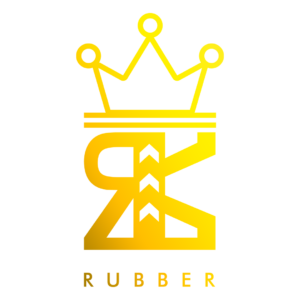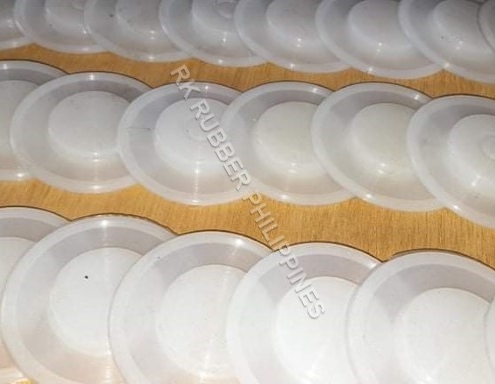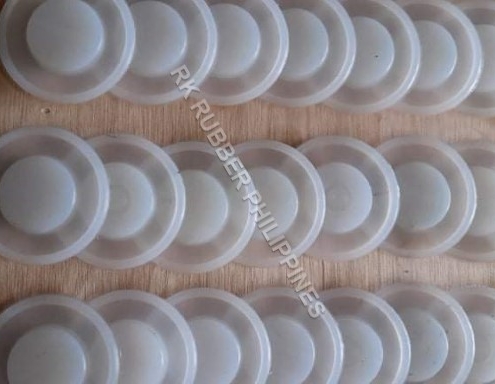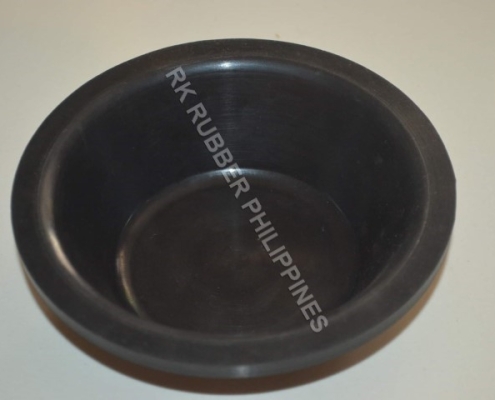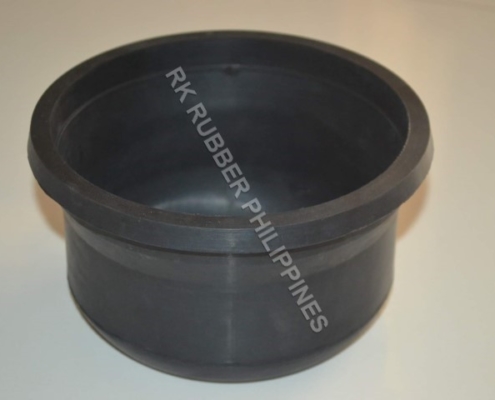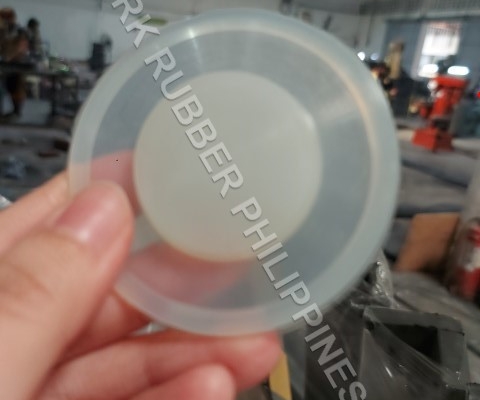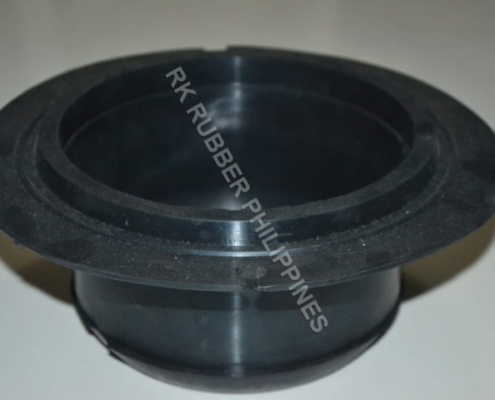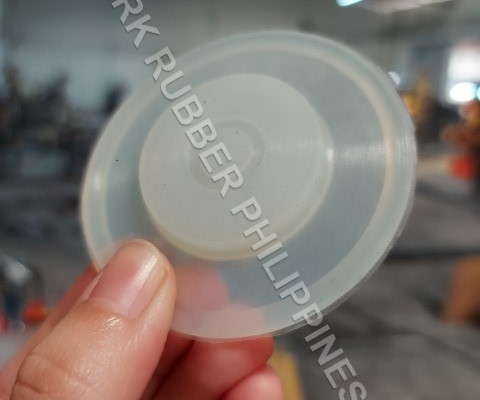Rubber Diaphragm
We’ve all heard the saying, “diamonds are a girl’s best friend,” but rubber diaphragms are our saving grace when it comes to pressure regulation and fluid protection. These versatile wonders are essential in various industries, ensuring safety and efficiency. In this article, we’ll dive into the function and importance of rubber diaphragms, explore their manufacturing process, discuss their advantages and disadvantages, and highlight the different application types available. So buckle up and prepare for a deep dive into the world of rubber diaphragms!
Key Takeaways
- Rubber diaphragms play a crucial role in regulating pressure and protecting fluids in various applications.
- They offer flexibility, durability, and resistance to corrosion and chemicals.
- The manufacturing process involves material selection, shaping, and molding, followed by rigorous quality control measures.
- Rubber diaphragms have advantages such as versatility, excellent resistance to corrosion and chemicals, and good elasticity, but they also have limitations in temperature resistance and potential degradation over time. Material selection is crucial to maximize advantages and minimize disadvantages.
The Function and Importance of Rubber Diaphragms
Rubber diaphragms play a crucial role in regulating pressure and protecting fluids in various applications. Their function is to separate two different mediums, ensuring the safe transfer of fluids while maintaining optimal pressure levels. These versatile components offer several advantages, such as flexibility, durability, and resistance to corrosion and chemicals. They can be manufactured through rubber molding, where raw rubber material is shaped into the desired diaphragm form using heat and pressure. This manufacturing process allows for customization according to specific engineering applications. Rubber diaphragms find application across various industries, including automotive, medical devices, aerospace, and even household appliances. Due to their ability to maintain fluid integrity while preventing leaks or contamination, these diaphragms are essential for ensuring safety in numerous systems and processes.
The Manufacturing Process of Rubber Diaphragms
During manufacturing, we take various steps to create rubber diaphragms, a versatile material. Our manufacturing techniques ensure the highest quality and safety standards. Material selection is a crucial aspect of this process. We carefully choose the right type of rubber based on specific requirements such as temperature resistance and chemical compatibility. Once the material is selected, we use advanced machinery to shape and mold it into diaphragm form. Quality control is implemented at every stage to detect any defects or inconsistencies. Our skilled technicians conduct thorough inspections and tests to ensure that each diaphragm meets our strict standards for performance and durability. Following these meticulous steps guarantees that our rubber diaphragms are reliable and safe for various applications.
Advantages and Disadvantages of Rubber Diaphragms
When considering the advantages and disadvantages of using diaphragms, we should carefully evaluate their cost-effectiveness and long-term performance. Rubber diaphragms offer several benefits. They are highly versatile and capable of working with different pressure levels and fluid types. Rubber materials also provide excellent resistance to corrosion and chemicals, ensuring safety in various applications. Additionally, rubber diaphragms offer good elasticity and flexibility, allowing for efficient sealing and reduced leakage risks.
However, there are a few drawbacks to consider as well. Rubber diaphragms may have limitations in terms of temperature resistance, which could affect their performance in extreme conditions. Moreover, some rubber materials may degrade over time due to exposure to sunlight or certain chemicals. Therefore, it is crucial to select the appropriate rubber material based on the specific requirements of your application to maximize the advantages while minimizing any potential disadvantages.
Features of Rubber Diaphragms
One notable feature of rubber diaphragms is their ability to provide efficient sealing, reducing the risk of leakage. These diaphragms are known for their flexibility and durability, making them ideal for various applications where a tight seal is crucial. Rubber diaphragms can withstand high pressures and temperature variations without compromising their sealing capabilities. This ensures that fluids and gases remain within the desired system, preventing potential hazards or accidents. The flexibility of rubber diaphragms allows them to adapt to different shapes and sizes, enabling a secure fit in various equipment and machinery. With their excellent sealing capabilities and long-lasting durability, rubber diaphragms offer a reliable solution for maintaining safety and preventing leaks in various industries.
Application Types and Variants of Rubber Diaphragms
When it comes to rubber diaphragms, we can distinguish between their application in the automotive industry and the industrial sector. Additionally, two commonly used materials for rubber diaphragms are EPDM and silicone, each with unique properties and advantages. These polymer materials play a crucial role in various engineering applications where flexibility, durability, and resistance to different environments are essential factors to consider.
Automotive Vs. Industrial
When deciding between automotive and industrial applications, it’s important to consider the specific needs and requirements. When it comes to rubber diaphragms, they play a crucial role in both automotive applications and industrial uses. However, there are some key differences when comparing automotive and industrial diaphragms.
In terms of automotive applications, rubber diaphragms are commonly used in fuel systems, braking systems, and emission control systems. These diaphragms must resist fuels and chemicals while providing reliable performance under varying temperatures and pressures. Safety is paramount in the automotive industry, so these diaphragms must withstand demanding conditions without compromising functionality.
On the other hand, industrial uses of rubber diaphragms can vary widely depending on the specific application. They can be found in pumps, valves, actuators, regulators, and other devices requiring precise pressure control or fluid protection. Industrial diaphragms often need to handle aggressive fluids or corrosive environments while maintaining high reliability.
When comparing automotive and industrial rubber diaphragms, it’s essential to consider factors such as material compatibility with different fluids or chemicals, temperature range capabilities, pressure ratings, durability requirements for long-term use, and overall safety performance. By understanding these distinctions between automotive and industrial applications for rubber diaphragms, you can make an informed decision based on your specific needs.
EPDM Vs. Silicone
To determine which material is best for your needs, consider the specific properties and applications of EPDM and silicone. EPDM, or Ethylene Propylene Diene Monomer, offers excellent resistance to weathering, ozone, UV radiation, and chemicals. It can withstand a wide range of temperatures from -50°C to +150°C. EPDM also has good electrical insulating properties and is commonly used in automotive parts like hoses and seals.
On the other hand, silicone has its advantages too. Silicone rubber exhibits exceptional thermal stability ranging from -60°C to +230°C. It also maintains flexibility over a wide temperature range and possesses high tear strength. Silicone is known for its excellent resistance to extreme temperatures and aging.
When comparing EPDM and silicone materials, it’s essential to consider factors such as temperature requirements, chemical compatibility, electrical insulation needs, and durability. Both materials have their unique properties that make them suitable for different applications.
Polymer Materials
You can choose from various polymer materials for your specific application needs. Polymer materials are widely used in various industries due to their versatility and unique properties. They are made through a manufacturing process called polymerization, where small molecules called monomers are chemically bonded together to form long chains or networks.
One advantage of polymer materials is their lightweight nature, making them easy to handle and transport. They also have excellent chemical resistance, which ensures durability and longevity in harsh environments. Additionally, polymers offer good electrical insulation properties, reducing the risk of electrical hazards.
However, there are some disadvantages to consider when using polymer materials. They may have lower mechanical strength compared to other materials like metals or ceramics. This means they may not be suitable for applications requiring high load-bearing capabilities.
Engineering Applications
Engineering applications often rely on polymer materials’ unique properties and versatility to meet specific design requirements. Rubber diaphragms, in particular, play a crucial role in various real-life engineering applications. One example is their use in pressure regulation systems, where rubber diaphragms effectively control and maintain pressure levels in industries like automotive and aerospace. Additionally, rubber diaphragms are employed in fluid protection applications such as valves and pumps, ensuring efficient flow control and preventing leakage.
However, engineering applications using rubber diaphragms do face challenges. The material’s susceptibility to wear and tear over time can lead to decreased performance or failure. Moreover, compatibility with different chemicals or extreme temperatures can be a concern.
Looking ahead, future trends and innovations aim to address these challenges by developing advanced rubber formulations that enhance durability and resistance to harsh environments. Additionally, advancements in manufacturing techniques enable the production of more precise and reliable rubber diaphragms for improved performance.
The Role of Rubber Diaphragms in Pressure Regulation
It’s important to consider their role and versatility when using rubber diaphragms in pressure regulation. Rubber diaphragms play a crucial role in fluid control, allowing for precise pressure regulation in various applications. Their flexibility and durability make them ideal for handling different fluids, ensuring safe and efficient operation. The benefits of using rubber diaphragms are numerous. They provide reliable sealing, preventing leaks and contamination while maintaining the desired pressure levels.
Additionally, advancements in rubber diaphragm technology have further enhanced their performance and lifespan. New materials and manufacturing techniques have improved their resistance to wear, temperature extremes, and chemical exposure. This ensures rubber diaphragms can withstand demanding environments without compromising safety or efficiency. Diaphragms are indispensable components in pressure regulation systems due to their vital role and ongoing technological advancements.
The Role of Rubber Diaphragms in Fluid Protection
The role of rubber diaphragms in ensuring the safety and efficiency of fluid systems cannot be overstated. These diaphragms, made from durable rubber materials, play a vital role in protecting fluids from contamination and maintaining system integrity. The material composition of rubber diaphragms is carefully chosen to withstand various pressures, temperatures, and chemical exposures.
This ensures their durability and longevity in demanding environments. Regular maintenance is essential to prolong the lifespan of these diaphragms, as it helps identify any signs of wear or damage that may compromise their effectiveness. By conducting routine inspections and replacing worn-out diaphragms promptly, we can ensure fluid systems’ continued safety and optimal performance. Trusting in the reliability of rubber diaphragms offers peace of mind for those seeking secure liquid protection.
Why Choose RK Rubber Enterprise Co. for your Rubber Diaphragm Applications
At RK Rubber Enterprise Co., we understand the importance of quality assurance when it comes to rubber diaphragms for fluid protection. That’s why we strive to provide the highest quality in all our products. Our rubber diaphragms undergo rigorous testing and inspection to meet industry standards and deliver reliable performance.
We also offer a wide range of customization options to cater to your specific needs. Whether you require different sizes, materials, or designs, our team is here to assist you in finding the perfect solution for your application.
Furthermore, we believe that safety shouldn’t come at a steep price. That’s why we offer competitive pricing without compromising on the quality of our rubber diaphragms. We believe in providing affordable solutions without sacrificing performance or reliability.
Choose RK Rubber Enterprise Co. for your rubber diaphragm applications and experience the highest level of quality assurance, extensive customization options, and competitive pricing in the industry.
Frequently Asked Questions
How Long Do Rubber Diaphragms Typically Last Before Needing to Be Replaced?
Rubber diaphragm lifespan depends on various factors, such as usage intensity and operating conditions. Regular inspections and maintenance are essential to ensure their durability. Replacement frequency should be determined based on these considerations for optimal safety.
Can Rubber Diaphragms Be Used in High-Pressure Applications?
Yes, rubber diaphragms can be used in high-pressure applications. We’ve seen advancements in technology that have pushed the limits of pressure resistance. Case studies highlight the successful use of rubber diaphragms in these environments.
Are There Any Specific Maintenance Requirements for Rubber Diaphragms?
Rubber diaphragm maintenance requirements include regular inspection for wear or damage, proper cleaning and lubrication, and following best practices for diaphragm longevity. Troubleshooting common issues can help ensure rubber diaphragms’ safe and reliable operation.
What Are the Common Materials Used in the Manufacturing of Rubber Diaphragms?
Rubber diaphragms are commonly manufactured using natural rubber, neoprene, and silicone. These materials offer advantages such as flexibility, durability, and chemical resistance, making them suitable for various pressure regulation and fluid protection applications.
Can Rubber Diaphragms Be Custom-Made to Fit Specific Equipment or Machinery?
Yes, rubber diaphragms can be custom-made to fit specific equipment or machinery. The customization options allow for precise sizing and compatibility, resulting in optimal performance and increased safety in various applications.
Conclusion
In conclusion, rubber diaphragms are an incredibly versatile component with many applications. From pressure regulation to fluid protection, these diaphragms are crucial in various industries. The manufacturing process ensures their durability and reliability. While there are some disadvantages to consider, the advantages outweigh them.
RK Rubber Enterprise Co. stands out as a trusted and reliable option when choosing a supplier for your rubber diaphragm needs. So why wait? Experience the seamless performance and peace of mind using rubber diaphragms from RK Rubber Enterprise Co.
Below are some of the actual products.
